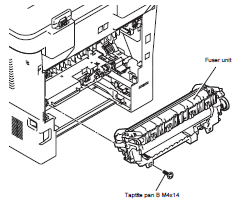
But as well all know, motherboards can be delicate creatures. “Motherboards have to do it on such a smaller scale, so it’s easier to regulate these smaller loads with smaller components,” he explained. PCWorld asked Gerow whether the motherboard or the PSU was better at power efficiency overall. And, of course, these circuits will need to be kept cool, making ventilation more of an issue. On the downside, you’re adding features to the motherboard, which means most cost and more demand on the limited real estate of the board. According to Corsair’s Gerow, the move offers more opportunities for customization. “You can scale the +3.3V and +5V for exactly what the build needs and no more than that,” Gerow said. Rather than being a small circuit board in a PSU, 3.3-volt and 5-volt power will be integrated into the motherboard. “It’s what powers your SSDs, your USB ports and all of your RGB lighting.” While 3.3V isn’t used as widely, according to Gerow, he added that Corsair uses it to power the LEDs in the company’s AIO coolers. “5V is still largely used,” Gerow explained. Because the multi-rail power supply is sending very low current to all voltage rails, efficiency is just 50 percent to 60 percent.īut the power load isn’t really going away, because people still need those rails. “Existing ATX multi-rail power supplies (5V, 3.3V, 12V, -12V, 5VSB) are not very efficient at low loads of today’s desktop computers when at idle,” according to Intel. This efficiency gain is the main reason for the push toward ATX12VO. “As desktop computers continue to become more energy efficient, the power supply AC-to-DC conversion loss can be the biggest consumer of power in a computer at idle,” Intel officials told PCWorld. Intel’s new ATX12VO spec will feature a 10-pin connector similar to the Compute Element connector. That means the 2006 PSU would have to consume about 127 watts of AC from the wall to generate about 99 watts, while the 2016 PSU would consume about 100 watts to produce 98 watts of power.īecause ATX12VO removes so many rails, the thick 24-pin Main Power Connector would drastically drop down to a tiny 10-pin connector, similar to what we saw with Intel’s Compute Element earlier this year. The 2006 PSU operated at 78-percent efficiency, while the 2016 PSU has a 98-percent efficiency rating.

#Dell b2360dn printer replacing power supply Pc#
Wind the clock forward ten years, and a similar 600-watt PSU made by the same company now budgets just 15 percent for 3.3-volt and 5-volt power.Įfficiency (how effective the PSU is at converting the AC from the wall to DC that the PC needs) has evolved, too. PCs originally ran mostly on 5 volts, but over time they’ve shifted mostly to 12-volt power. One PSU maker, for example, pointed to a circa-2006, 600-watt supply it made that had 25 percent of its power dedicated to 3.3-volt and 5-volt rails. Still, eliminating the production of 3.3-volt and 5-volt power, or “rails,” in the PSU itself is a major change. Why kick 3.3 volts and 5 volts to the curb? “Intel plans to continue to publish the ATX Multi Rail spec to maintain compatibility with existing motherboards and power supplies to provide the most options for our OEMs and customers,” Intel officials told PCWorld.Ĭomparing a 2006 PSU (left) versus a 2016 version (right), we can see voltages have trended away from 3.3- and 5.5-volt use toward 12-volt. ATX12VO is currently aimed mostly at PC OEMs and system vendors-some of whom have already started down this path on their own.ĪTX12VO won’t be replacing ATX12V for individual PC builders. Don’t take my ATX12V power supply away!ĭon’t panic, DIYers: The PSU Enforcement Agents will not be coming to take away your 1,500-watt ATX PSU (there’s no such thing as PSU police anyway).


That’s the other big change, so keep reading to find out more.

The ATX12VO spec removes voltage rails from the power supply, all in a bid to improve efficiency standards on the PC and meet stringent government regulations. But while the spec essentially removes +3.3-volt, +5-volt and -12-volt and +5-volt standby power from the PSU, they aren’t going away-they’re just moving to the motherboard. We don’t often talk about power supplies, but Intel’s new ATX12VO spec-that’s an ‘O’ for ‘Oscar,’ not a zero-will start appearing soon in pre-built PCs from OEMs and system integrators, and it represents a major change in PSU design.


 0 kommentar(er)
0 kommentar(er)
